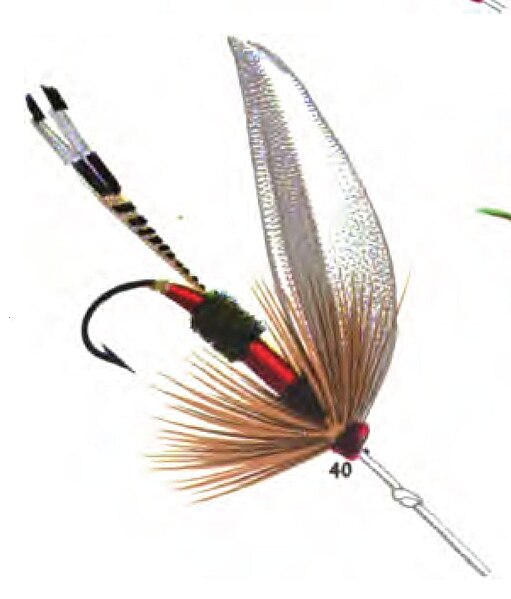The Royal Coachman is an artificial fly that has been tied as a wet fly, dry fly and streamer pattern. Today, the Royal Coachman and its variations are tied mostly as dry flies and fished floating on the water surface. It is a popular and widely used pattern for freshwater game fish, particularly trout and grayling. Large streamer versions are also used for winter steelhead and Atlantic salmon.
Drawing of Royal Coachman, 1892
A #12 Royal Wulff dry fly, a Royal Coachman derivative
Royal Coachman Bucktail
Royal Humpy dry fly
An artificial fly or fly lure is a type of fishing lure, usually used in the sport of fly fishing. In general, artificial flies are an imitation of aquatic insects that are natural food of the target fish species the fly fishers try to catch. Artificial flies are constructed by fly tying, in which furs, feathers, thread or any of very many other materials are tied onto a fish hook.
Classic 19th-century artificial fly – The Triumph
First known illustration of a fishing fly from 4th. edition (1652) of John Dennys's The Secrets of Angling, first published in 1613, probably the earliest poetical English treatise on Angling.,
Frontispiece from Bowlker's Art of Angling (1854) showing a variety of artificial flies
Illustration of a large Pike fly (1865)








